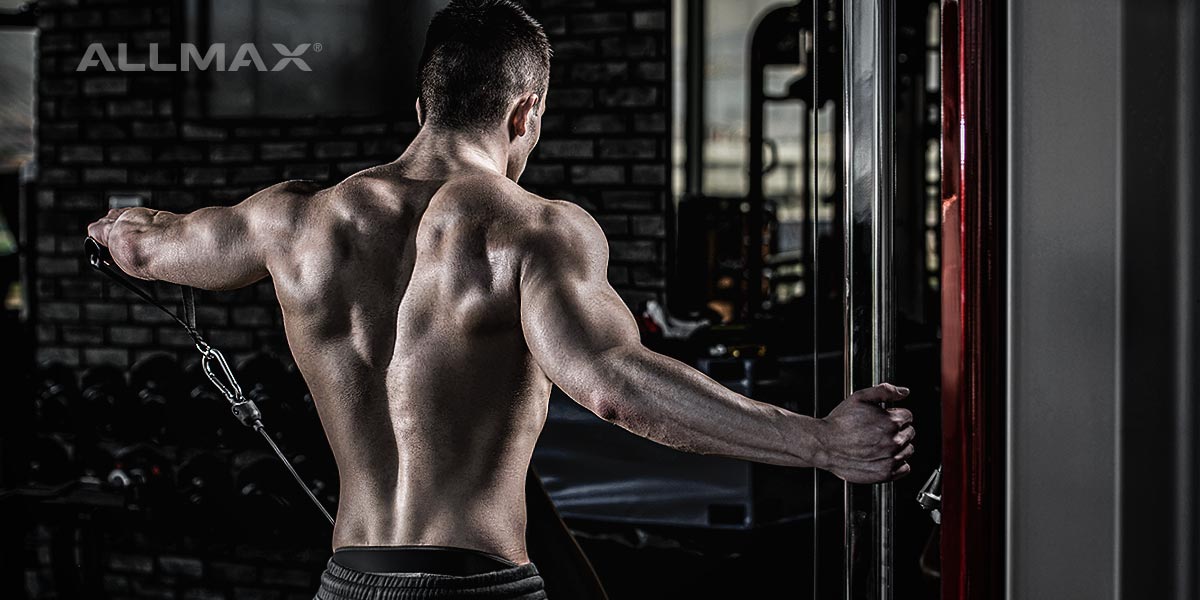Weight trainers often grow larger shoulder muscle groups yet fail to develop the smaller rotor cuff and scapular stabilizer. This causes weakness and results in asynchronous growth, usually found in lifters who are forced to stop lifting due to shoulder pain or more severe injuries. During recovery, the time lost can often stunt growth, leading to lagging shoulder muscles or even a drop in overall strength and mass. This can be avoided. Lifters need only employ exercises that engage all muscle groups around the shoulder including shoulder workouts with cables.
How to do Cable Lateral Raise
Well-developed shoulders are as crucial to the perfect v-shaped torso as chiseled abs and bulging biceps. Still, some bodybuilders struggle to build strong, prominent shoulders. And though dumbbells seem an easy go-to for popular shoulder exercises, isolated cable workouts, like the lateral cable raise and cable front raise, are ideal. The lateral cable road is a beginner-friendly shoulder exercise that can be performed using resistance bands or a cable machine.
How to Perform a One-Arm Cable Lateral Raise
As a shoulder exercise, the lateral cable raise, and all lateral raises, activates the lateral deltoids, anterior deltoids and serratus anterior. Prepare for the exercise by placing the pin heights on the tower to the lowest setting available and then choosing the appropriate weight. Anyone who is new to this exercise should begin with a lower weight and progressively increase the load until they find the right weight for their rep count.- Stand with the left arm perpendicular to the tower.
- Hold the pulley handle with the right hand with the palm facing toward the body. The cable should move across the body for optimal range of motion.
- Lengthen the posture by standing tall, retracting the shoulders and engaging the core.
- Start with the handle at the side. The elbows may be straight or slightly bent.
- Raise the arm until the elbow is at shoulder height. Try to keep the elbow steady throughout the movement so that it neither extends nor bends.
- Hold for a few seconds before lowering the arm slowly using resistance, not momentum.
- Repeat the exercise with the other arm.
How to Perform a Two-Arm Cable Lateral Raise
We’ve outlined a single-arm variation of the exercise, but weight lifters often perform a two-arm variation as well.Preparation
In this case, lifters use two cables, one on the cable machine’s left and right. As with the one-arm version, each hand takes the handle on the opposite side. So, the right hand would grab the handle on the left, and the left hand would grip the handle on the right, creating a criss-cross.Execution
To perform this variation:- Stand in the center of the machine facing it.
- Start with the hands in front on the waist and lift both arms until they are in-line with the shoulders.
- Pause at the top for five to 10 minutes before lowering to the start position.
Other Variations of the Cable Lateral Raise
The lateral raise has many variations and the cable machine add a few of its own:- Leaning cable lateral raise – This is a more challenging version of the cable lateral raise performed by holding onto the machine and leaning away from it before performing the exercise.
- Back-grip cable lateral raise – This is similar to the single-armed variation. Still, instead of gripping the cable in front of the body, lifters hold it behind them. When grasping the handle behind the back, it gives the delts a deeper stretch.
Cable Front Raise
As a complementary exercise, combine the cable front raise and the lateral cable raise in an upcoming shoulder workout session. The cable front raise works many the same muscles as the lateral raise but has the added benefit of working the upper chest fibers and the lower traps. To prepare for the exercise, attach a handle or straight bar to a cable pulley at the lowest setting. With the back to the cable machine, grab the bar allowing the cable to run between the legs. Legs should be shoulder apart. Start with the elbows slightly bent and the arms down in front of the waist. Exhale and raise the bar until the arms are shoulder length. Hold the position for a second or more before lowering the arms, inhaling as you do so.Build Bigger Shoulders FAQ
We’ve answered some of the most commonly asked questions about building massive shoulders.Is the Lateral Raise a Push or a Pull Exercise?
Since the lateral raise primarily train the front and lateral deltoids (i.e., the shoulder), it is considered a push exercise. Push exercises focus on the body’s front, while pull exercises train the muscle in the back.What Kind of Exercises Should I Do to Get Big Deltoids?
Several exercises aid to building bold deltoids to round off that V-shaped torso:- Cable lateral raise,
- Military press,
- Barbell upright rows,
- Cable front raises.
- Rear dumbbell lateral raise, and
- Shoulder shrugs
How to Exercise to Get Broad Shoulders?
Even though genetics will determine how broad shoulders can grow, some exercises can promote wider muscular shoulders:- Rear lateral raises,
- Face pulls,
- Dumbbell front raises
- Incline rows, and
- Overhead shoulder press
Do Push-Ups and Dips Build Shoulders?
Yes. The push-up is a potent compound movement that trains the shoulders, chest, back and abs. Tricep dips engage the traps, which form the triangle at the back of the neck and shoulders and are a key to building a robust well-formed neck and shoulders.How to Deactivate the Front of My Shoulder?
One trick is to isolate the rear delts by contracting the muscle. Alternatively, choose exercises like rear delt flys and bent-over rows that activate the rear delts.Should I Train Rear Delts on a Pull Day or Push Day?
Definitely, pull day. The rear delts are more engaged during compound back exercises like rows than in compound shoulder exercises such as the shoulder press. So, instead of adding rear delt flys to your push day workout, shift them over to pull days instead. Since the back delt muscles are automatically activated on pull days, it is best to do the isolated rear delt exercises on pull days.How to Do Shoulder Exercises With Dumbbells?
A lot of dumbbell exercises work well to train the shoulders. Some of them, like the two arm dumbbell, bent rows, you may already be doing with barbells. Here are some of our favorite dumbbell-only shoulder exercises:- Alternating concentration curls,
- Overhead dumbbell press,
- Incline and decline dumbbell presses,
- Military press,
- Bent-over dumbbell rows,
- Alternating rear delt fly with dumbbells
- Lateral raises with dumbbells, and
- Front raises with dumbbells
What Are Some Exercises to Do to Get Big Arms?
The best exercises for bigger arms incorporate curling weights toward your shoulders to contract the bicep and push movements that straighten the arm for firmer triceps. According to a 2012 ACE study, triangle push-ups, dips and tricep kickbacks are the most effective exercises for bigger triceps. Curls (all the variations) and chin-ups are still the best exercises for maximum bicep growth.How to Provide Progressive Overload on Your Rear Delts?
Progressive overload is a process of continually increasing the demand on your muscles. As a result, muscles grow in size, strength and endurance. To achieve progressive overload, increase the volume of an exercise by doing one or more of the following:- Increase resistance by increasing the weight,
- Complete more reps per set, and
- Add extra sets to rear delt exercises
What Are the Best Exercises for the Shoulders?
The barbell shoulder press, cable front raise, lateral cable raise, Arnold press, dumbbell lateral raise, inclined dumbbell row, and standing military press are some of the most effective exercises for building big shoulders. We’ve put together a powerful program that is sure to work all the shoulder muscles to get beginners and more advanced lifters closer to the allusive V-tapered torso.Shoulder Workout:
| Exercise | Sets | Reps |
| Cable front raise | 4 | 6-8 |
| Cable lateral raise | 4 | 6-8 |
| Face pulls | 4 | 8-12 |
| Reverse pec deck fly | 4 | 8-12 |
| Barbell push press | 4 | 8-12 |
| Arnold press with dumbbell | 4 | 8-12 |
| Pull-ups | 4 | 8-12 |
| Barbell shrug | 4 | 8-10 |



